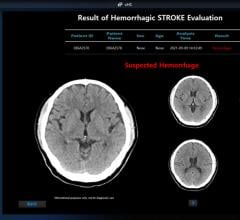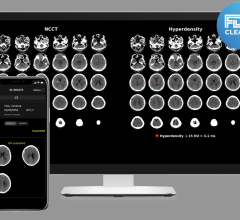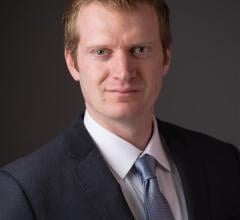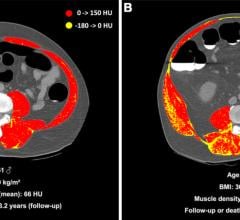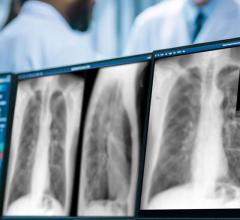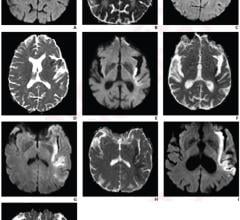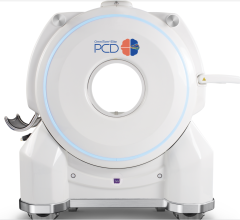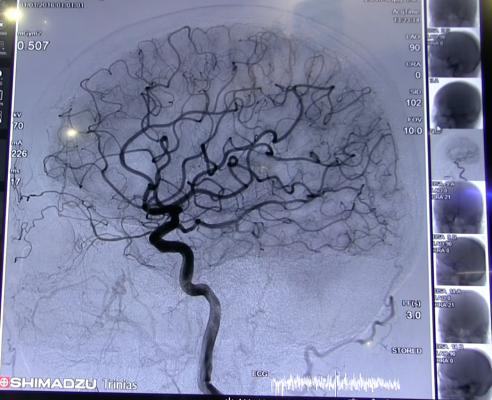
March 30, 2018 — The Marcus Foundation has donated $15 million to establish the Marcus Stroke Network, a coordinated and collaborative effort among three healthcare systems and the American Heart Association/American Stroke Association (AHA/ASA). The collaborative will work together to help reduce stroke disability and death rates in the Southeastern United States.
Powered by two comprehensive stroke centers at Grady Health System and Emory University School of Medicine, both located in Atlanta, and guided by the ASA’s science-based quality and systems improvement expertise, the Marcus Stroke Network aims to:
- Extend the world-renowned stroke expertise of the Marcus Stroke Network physician team by using innovative telemedicine technology to aggressively accelerate early and definitive stroke treatment;
- Establish the region’s first Mobile Stroke Unit, a specialized ambulance equipped with a computed tomography (CT) scanner that allows medical teams to initiate lifesaving treatment for stroke patients before they reach the hospital;
- Implement a new paradigm of acute stroke care by initiating a direct “ambulance to angiography” approach;
- Support paramedics providing pre-hospital care to help with the diagnosis and triage of stroke patients to the nearest appropriate hospital, thereby optimizing treatment and community resources more effectively; and
- Enhance the quality of care at participating Marcus Stroke Network hospitals and ensure long-term sustainability through a Regional Coordinated Stroke System of Care.
“This aggressive, action-focused program is a unique decision support system driven by technology, real-time outcomes and scalable solutions,” said Marcus Stroke Network director Michael Frankel, M.D., professor and director of vascular neurology, Emory University School of Medicine, chief of neurology and director of Grady’s Marcus Stroke and Neuroscience Center.
According to Frankel, vascular neurologists and other medical professionals at Emory and Grady will provide real-time stroke guidance to emergency medicine doctors at remote sites around the region, helping make diagnoses and treatment recommendations for patients who have had acute strokes.
“Using a sophisticated telemedicine platform, our goal is to extend the vast experience and proven expertise of our stroke specialists to participating network hospitals, giving each and every stroke patient in the areas serviced by our network partners the best chance of survival and living an independent quality of life,” he said.
A major focus of the Marcus Stroke Network is providing timely, accurate and evidence-based quality care to stroke patients. This approach will be guided by the science and expertise of the AHA/ASA. Assessing and treating stroke patients accurately and quickly is the goal of all entities involved in stroke care, and a result of the science and guidelines established by the American Heart Association/American Stroke Association.
“One of our important quality measures for partners recruited to participate in the Marcus Stroke Network will be working to achieve the highest levels of patient care in our ‘Get With The Guidelines-Stroke’ program, ensuring consistent adherence to the latest scientific treatment guidelines,” said Dianne Foster, the American Heart Association’s Greater Southeast Affiliate vice president for quality and systems improvement.
“We are honored to collaborate with the Marcus Stroke Network on this outstanding initiative to improve health and wellness to individuals and communities.”
Frankel and his colleagues have been working for more than 25 years on testing innovative and new treatments to reduce the death and disability of this common disease. His team helped pioneer treatments in stroke including mechanical thrombectomy and intravenous tissue plasminogen activator, commonly called IV t-PA or alteplase.
Both are now a standard of care for patients with ischemic stroke who meet specific treatment criteria in the emergency setting. Ischemic stroke, caused by cerebral artery blockage, is the most common form of acute stroke.
According to Frankel, the use of alteplase has not been effectively implemented at hospitals with limited capabilities in stroke care. The Marcus Stroke Network brings the stroke expertise of Emory and Grady neurologists to the bedside using a telemedicine approach to more rapidly identify patients who will benefit from treatment. Earlier treatment increases the chances of survival with minimal or no disability.
Stroke specialists working for the network will be able to communicate with participating hospitals, using cutting-edge real-time technology including digital video cameras, internet telecommunications, tablets and other technology to rapidly assess and treat patients with acute stroke symptoms.
The system will also enable remote guidance of local follow-up care to optimize stroke prevention strategies. In addition, the Marcus Stroke Network’s mobile stroke ambulance will operate through Grady’s EMS system, linking the network doctors directly to patients in the field by utilizing an on-board CT scanner to facilitate the earliest treatment with alteplase possible for eligible patients.
Building on the success of Grady’s Marcus Stroke & Neuroscience Center in developing and testing the most cutting-edge treatments in acute stroke (e.g. mechanical thrombectomy), the new network is implementing innovative strategies to more rapidly identify patients with acute stroke in the field and directly transport them to the neuroangiography suite (aka “direct to angio”).
According to Raul Nogueira, M.D., professor of neurology at Emory University and director of Grady’s neuroendovascular service, “This approach substantially reduces the time from major arterial occlusion in the brain to definitive therapy with mechanical thrombectomy.” Nogueira said such approaches help minimize brain damage and promote recovery.
“We know that every second counts after a stroke and the mantra ‘time is brain’ is critically accurate. This innovative and collaborative effort will help expedite treatment for the people of this region and ultimately lead to lives saved,” said John Haupert, president and CEO of Grady Health System.
The Marcus Stroke Network, endorsed by Georgia's Department of Public Health, will also provide a 24/7 call center serving as Georgia's first centralized resource for paramedics to assist with decisions about diagnosing stroke and indicating to the paramedic the location of the nearest appropriate hospital destination for treatment.
Boca Raton Regional Hospital’s Marcus Neuroscience Institute will also be a collaborating partner in the new network. “We are enthused to be part of this initial consortium with such outstanding and accomplished partners as Emory and Grady,” said Frank Vrionis, M.D., MPH, Ph.D., director of the institute.
“Patients in our respective regions will certainly benefit from our collective expertise, and we look forward to this new collaborative as further evidence of our institute’s robust and evolving capabilities in the neurosciences.”
Stroke is a leading cause of death in the United States and the leading cause of long term adult disability. Georgia is part of the nation’s “stroke belt,” an 11-state region where scientific studies indicate the risk of stroke is 34 percent higher for the general population than it is in other areas of the country.
For more information: www.heart.org


 December 11, 2023
December 11, 2023 
